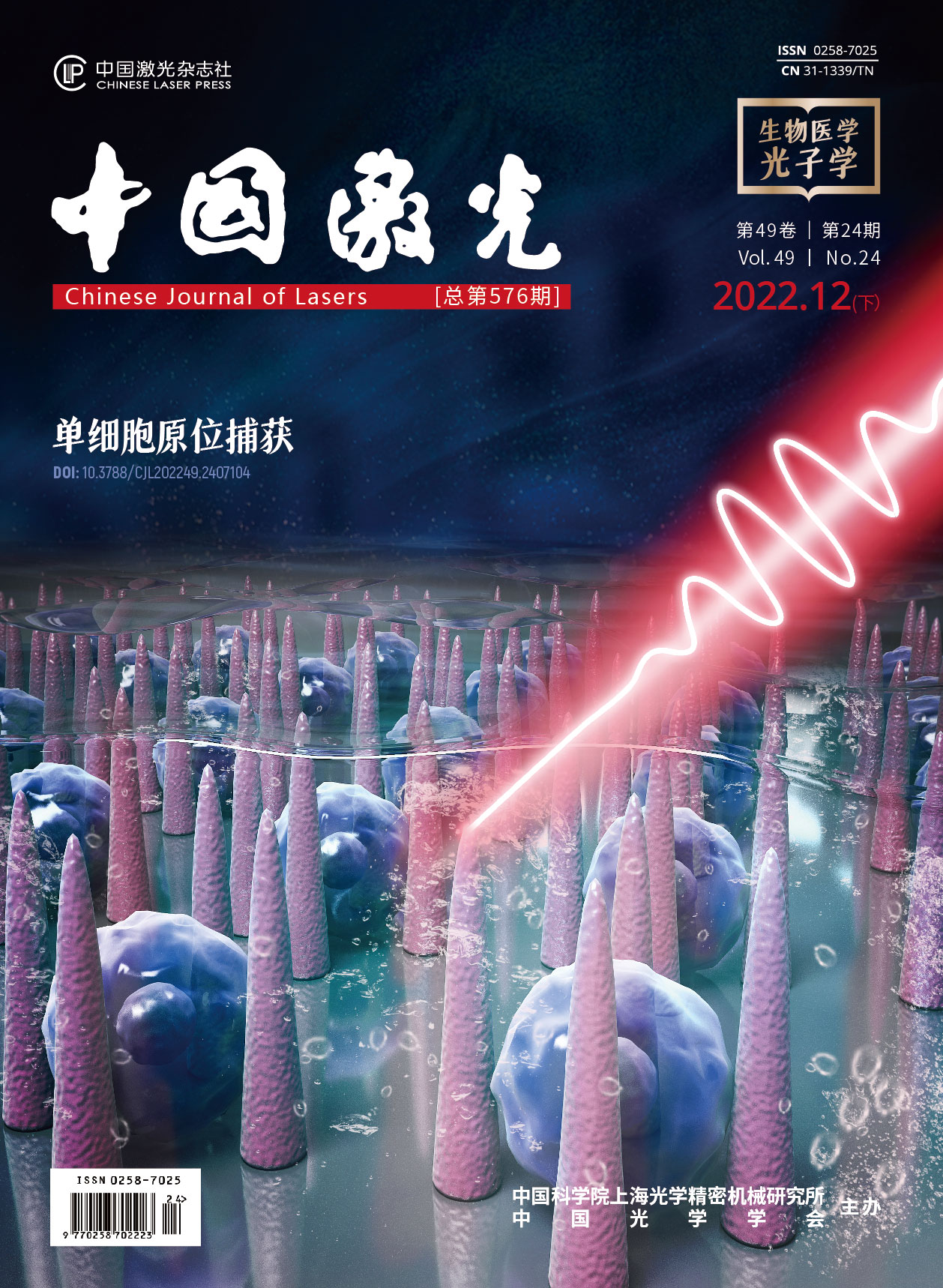基于OCT无创血糖检测的图像校正补偿方法  下载: 723次
下载: 723次
Diabetes is one of the major diseases affecting human health. Patients are required to monitor and control their blood glucose concentration continuously to prevent complications. Compared with traditional invasive methods, optical noninvasive blood glucose detection greatly reduces the pain of blood collection for patients and controls blood glucose more accurately by increasing the number of measurements. Recently, the noninvasive blood glucose detection method using optical coherence tomography (OCT) has become a technology with great development potential. However, the acquired three-dimensional images in skin areas are inconsistent in spatial range during the image acquisition due to the slight involuntary shaking of the subject, affecting the accuracy of the noninvasive blood glucose measurement. To solve this problem, we propose a skin three-dimensional image correction and compensation method based on OCT noninvasive blood glucose detection.
The deviation of the 3D OCT image collected during noninvasive blood glucose detection is corrected and compensated using an algorithm. First, we study the influence of image deviation on experimental data using theoretical analysis. In the experiment, the skin area is roughly positioned by pasting a square positioning label on the skin surface. Due to the uneven border of the positioning and the involuntary movement of the arm when collecting images, a deviation is observed in the image of the extracted skin area, leading to errors in the calibration and prediction results. The image of the skin area is extracted using morphological erosion expansion, then the image boundary is smoothed and the skin surface is aligned. After the template is determined by selecting the central area of the collected skin image, the compensation algorithm is used to gradually match the template with the skin area images involved in the subsequent blood glucose calculation and perform correction and compensation to ensure consistency in the skin area. We compare the data before and after compensation by the human blood glucose experiments. Furthermore, we compare the predicted results before and after compensation, such as the standard deviation of the actual and predicted blood glucose concentration, correlation coefficient, and other parameters, to validate the compensation algorithm.
In this paper, the deviation of the skin image data is corrected using a compensation algorithm. Figure 6 shows a comparison between the skin images acquired at different moments during the blood glucose collection and the image corrected using the template image. The results show a high correlation between the template and correction images. The average correlation coefficient between the image and template is 7.3 times higher than that without correction. The number of relevant areas in the calibration chart after compensation increases, as shown in Table 2. Furthermore, we obtain the difference between the prediction results before and after the compensation. From the prediction chart, the prediction results calculated from skin image after applying the compensation algorithm are closer to the real blood glucose concentrations. Table 3 shows the correction and compensation effects of different volunteers. The correlation coefficient increases from 0.37 to 0.65, and the proportion of predicted blood glucose in zone A using the Clark grid error analysis increases from 51.82% to 79.86%. Additionally, the standard deviation of the prediction results decreases from 1.34 mmol/L to 0.83 mmol/L after compensation. Clinical experimental data show that the accuracy of the noninvasive blood glucose prediction value is improved by 36.57%. Moreover, we study the influence of the change in the blood glucose concentration on the scattering coefficient. The results show that the scattering coefficient change caused by the blood glucose concentration change of 1 mmol/L is about 15.8 times greater than that when there is no blood glucose change.
As a methodology of optical noninvasive blood glucose detection, OCT is noninvasive, real-time, and sensitive to changes in blood glucose concentration in dermal tissue interstitial fluid. In this paper, we propose a compensation algorithm for image correction to improve the motion artifacts caused by the subject shaking. The compensation algorithm can find the position with the greatest similarity between the template and each image. The results show that using the compensated skin image for blood glucose calibration calculation increases the number of areas with higher correlation coefficients in the calibration chart. Meanwhile, the deviation of the predicted result is smaller than that without compensation. Furthermore, the difference between the predicted and actual values decreases after compensation, and the correlation is better than that before compensation. Therefore, the compensation algorithm effectively solves the prediction error caused by the extracted skin area deviating. This study has the important reference value for optical noninvasive blood glucose detection and is suitable for other optical imaging applications that require accurate quantitative calculations.
周聪聪, 姚晓天, 苏亚, 郝鹏, 崔省伟, 刘逸飞, 何松. 基于OCT无创血糖检测的图像校正补偿方法[J]. 中国激光, 2022, 49(24): 2407201. Congcong Zhou, X. Steve Yao, Ya Su, Peng Hao, Shengwei Cui, Yifei Liu, Song He. Image Correction and Compensation Method Based on OCT Noninvasive Blood Glucose Detection[J]. Chinese Journal of Lasers, 2022, 49(24): 2407201.







